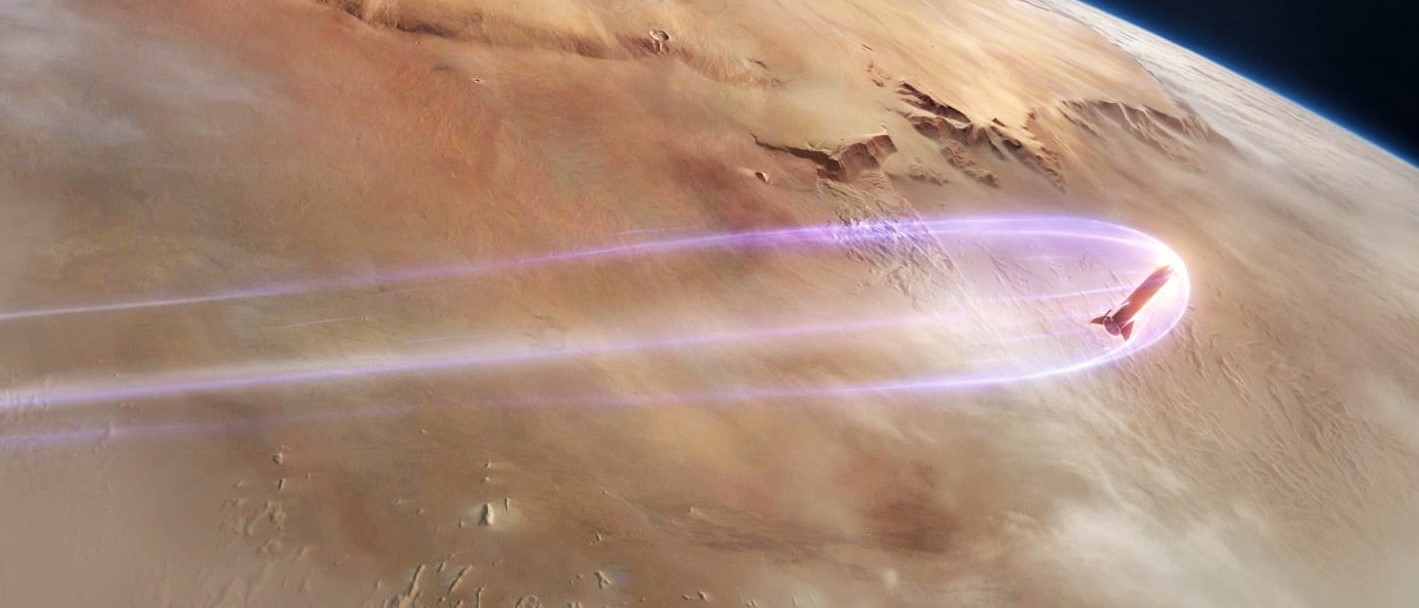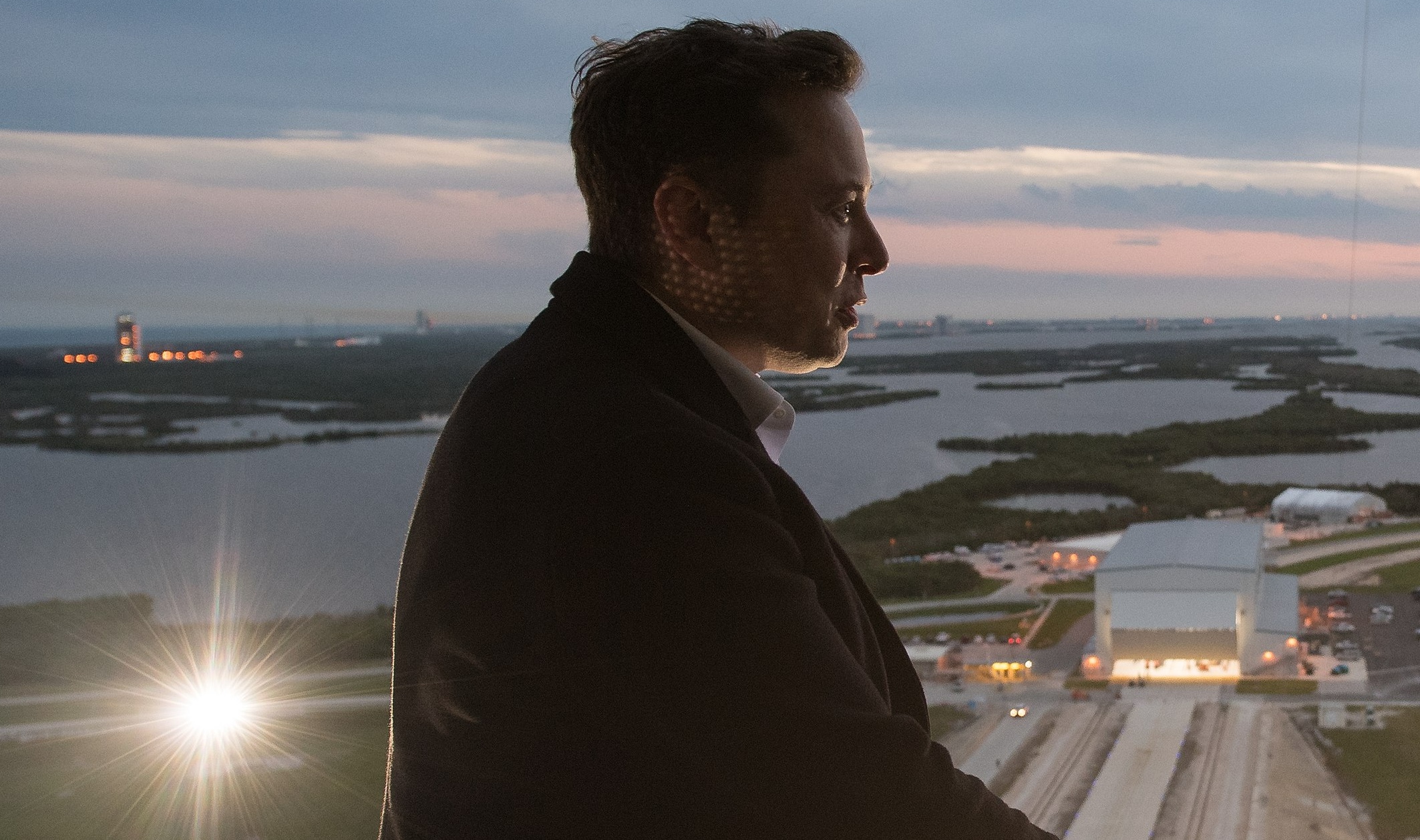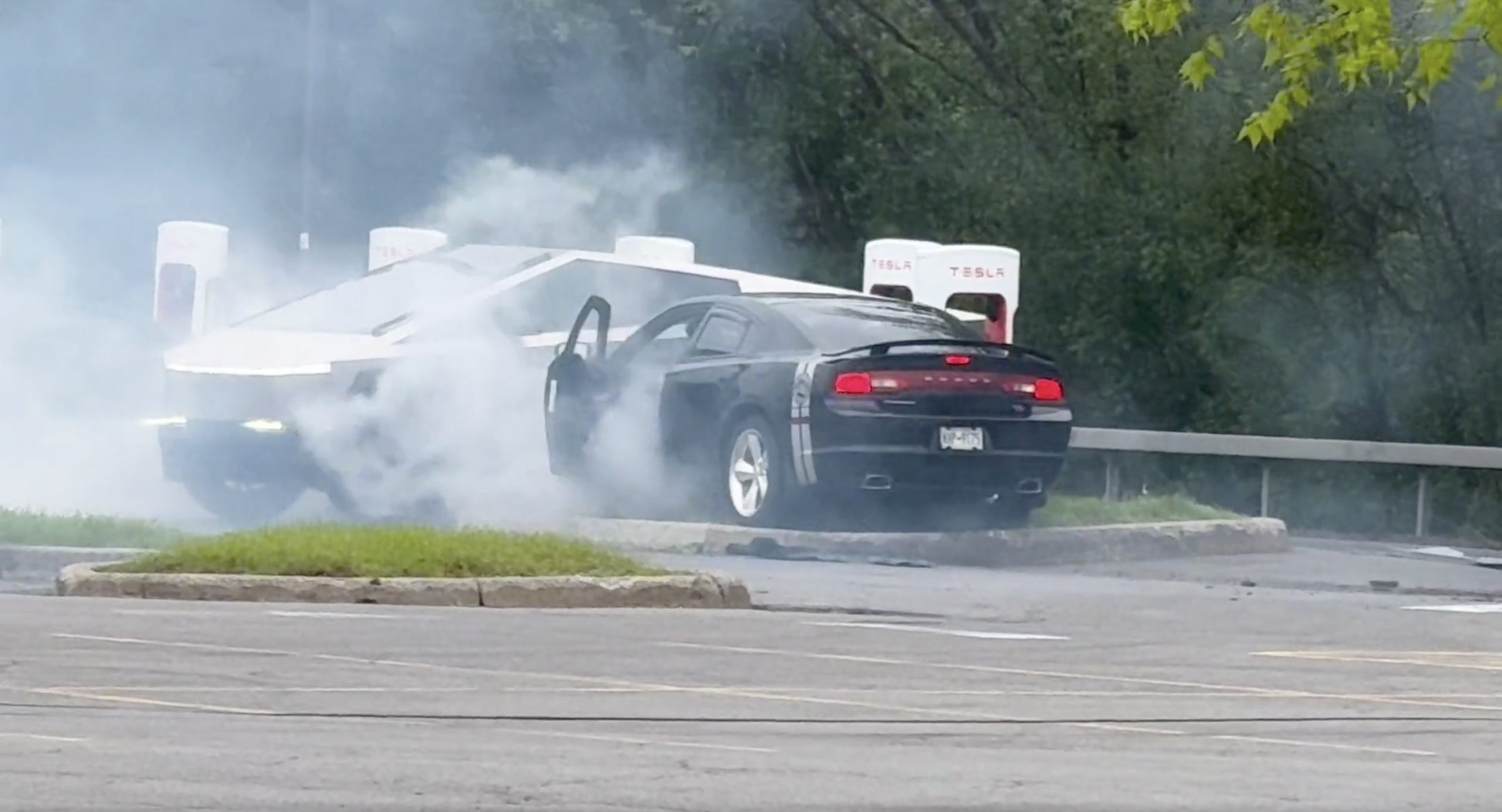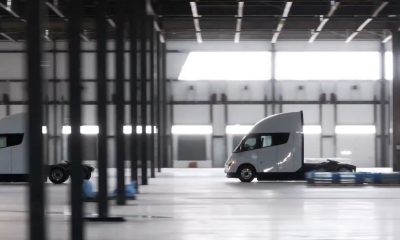

Lifestyle
Tesla on Mars: A vision of an all-electric infrastructure on the Red Planet
The words Elon Musk and Mars find themselves in the same sentence frequently, and for good reason. After all, why would Musk just be content merely working on the problems of Earth knowing full well that it would only take one extinction-level event to wipe it all out? If we manage to avoid all major asteroids, the Sun is still going to expand and burn us up in about 5 billion years, so we should probably practice living somewhere else in the meantime. Or so goes the argument. [For what it’s worth, I don’t need the existential argument to want to colonize other planets.]
SpaceX and Musk have big plans to shuttle the first long-term residents of Mars to their new regolith-covered home. But in the meantime, Musk is also running an all-electric car company that’s expanding by the minute and keeps selling more and more cars. Tesla and SpaceX have already seen some relationship crossover, and two places particularly stand out: Musk’s cherry red Roadster sent into space by the maiden launch of Falcon Heavy, complete with Starman as its passenger; and the upcoming SpaceX thruster package that will be an option on the next generation Roadster.
Now, imagine if that relationship were expanded to a colony-level scale on Mars…
[[[[[ Camera fades to black then fades back in. ]]]]]
The year is 2050, and you’ve caught a seat on the last cargo ship bound for Mars full of red planet editions (rpe) of Models S, 3, X, and Y on their way for delivery to Colony Bravo. This is one of the last shipments to come from Earth before the Terafactory finishes construction and begins manufacturing on site. The company’s production lines were retooled to build the vehicles to work without air or air pressure and under extreme temperatures and high levels of UV radiation, along with a few other things to help traverse the planet’s surface better. However, skipping the satellite clean room procedures will be a welcome change for Tesla as it’s just one less thing their factory has to comply with to meet planetary protection regulations.
You’re on your way to visit your niece and nephew who were among the first humans to be born on Mars. Since the journey and stay on the planet will be long, you’ve taken up a contract job repairing Tesla tiles on habitation modules. That’s how you scored this economy class flight and can finally afford to see your brother for the first time since he and his wife left Earth for an Autopilot programming job at Tesla’s Gale Crater headquarters a few years ago.
Your brother picks you up in his Roadster (rpe). He tells you a bit about the work he’s doing training Tesla’s neural net to map out the red planet as you drive along and take in the sights. The mapping has been very useful to the researchers on Mars for route and site planning. Licensing deals are now in the works with relocation companies to help the next wave of colonists pick out prime real estate. One of the groups is going to set up the first terraforming projects using some type of silicon aerogel.

After arriving at your brother’s house, you finally meet your niece and nephew and the team of doctors monitoring their development. It seems a little invasive to have medical people in and out of their personal space so frequently, but your brother’s wife swears it’s become normal for them. You take note that the family’s habitat has both a top dome with Tesla tiles for electricity and an underground residence that’s connected to the larger city infrastructure via tunneled highways. A couple of them run on Hyper-T technology, Tesla’s Martian-modified version of the Earth-based Hyperloop, and the oldest tunnels were put in place by The Boring Company; however, several other digging and construction companies have since moved in, and Boring decided to just license its tech on Mars so it could focus on all the Earth projects it was busy with.
You get a quick tour of your brother’s local community and see that large facilities and shopping centers are also underground, but most garden pods are open to the surface with similar top domes to what your brother has, albeit much taller. You pass a battery storage center full of Tesla Megapacks (rpe) that are connected to solar panels at the surface.
Your brother next takes you to the lodging facility that Tesla contracted for you. According to the area’s website, you’re staying in a modified Tesla Semi (rpe) that’s been converted into a type of RV. Since the big rigs were already climate controlled and pressurized for construction work throughout the planet, the retro fits were pretty cheap and give newcomers affordable housing while they settle into their new lives and contract one of the digging companies to bore out a residence.
On the way to your lodging, your brother sees a geologically interesting patch of regolith and wants to grab a few bits for his rock collection. Using the Roadster’s split-chamber function, an airlock is formed around the driver’s seat after a clear divider goes up between the two of you and seals into place. He zips his walkaround suit up to the atmospheric helmet stored under his seat and goes outside for a bit.

After he comes back inside, he remembers that he didn’t offer to feed you lunch at his house and asks if you want to check out one of the local Supercharger stations where there’s a nice retro-themed restaurant. You don’t have to report to Tesla until tomorrow, so you’re up for it. Once there, you enter a car-sized airlock before moving into the charging area. Your brother mentions some things about how the Superchargers work there and how they need a pressurized environment like this one, prompting you to look upward. Somehow you missed the giant bubble encompassing the whole facility.
You both exit the Roadster and start heading towards Maye’s Diner a few hundred feet away. There’s an arcade in a building next door and before you ask about it, your brother tells you it was his favorite place to go when he first moved to Mars. It has all the old Teslatari classics, but the real draw is the virtual reality (VR) games from Tesla’s Full-Self Driving (FSD) launch.
You remember the cool looking sunglasses that were sent to customers who’d purchased FSD that turned out to be VR headsets with games and experiences integrated with the Autopilot. Game obstacles were mapped from the actual roads as the cars were driving. Your brother reminds you that’s what inspired him to move to the red planet – the Total Recall VR experience that came pre-loaded in his Model S. The two of you then grab a bite to eat at Maye’s and head out.
Once at your RV habitat, you watch the local news streamed from your included Starlink-M Internet plan, and then notice you have mail already. It’s just marketing, but you read it anyway, kind of like you would read flyers for tourist attractions on vacation. The ad says Amazon Red has a new members deal for Earth classic deliveries. “A taste of home!” it says, along with explaining how the company makes deliveries to Mars every two weeks, regardless of orbital synchronization, and that all products are certified sterile by the Planetary Protection Food & Drug Agency. You wonder if the food items need to be reconstituted but then decide you’ve had enough information for one day and head to bed.
[[[[[ Camera fades in and out again. ]]]]]
So, do you think Tesla will have a big presence on Mars once Musk et al. get there??
Elon Musk
X account with 184 followers inadvertently saves US space program amid Musk-Trump row
Needless to say, the X user has far more than 184 followers today after his level-headed feat.

An X user with 184 followers has become the unlikely hero of the United States’ space program by effectively de-escalating a row between SpaceX CEO Elon Musk and President Donald Trump on social media.
Needless to say, the X user has far more than 184 followers today after his level-headed feat.
A Near Fall
During Elon Musk and Donald Trump’s fallout last week, the U.S. President stated in a post on Truth Social that a good way for the United States government to save money would be to terminate subsidies and contracts from the CEO’s companies. Musk responded to Trump’s post by stating that SpaceX will start decommissioning its Dragon spacecraft immediately.
Musk’s comment was received with shock among the space community, partly because the U.S. space program is currently reliant on SpaceX to send supplies and astronauts to the International Space Station (ISS). Without Dragon, the United States will likely have to utilize Russia’s Soyuz for the same services—at a significantly higher price.
X User to the Rescue
It was evident among X users that Musk’s comments about Dragon being decommissioned were posted while emotions were high. It was then no surprise that an X account with 184 followers, @Fab25june, commented on Musk’s post, urging the CEO to rethink his decision. “This is a shame this back and forth. You are both better than this. Cool off and take a step back for a couple days,” the X user wrote in a reply.
Much to the social media platform’s surprise, Musk responded to the user. Even more surprising, the CEO stated that SpaceX would not be decommissioning Dragon after all. “Good advice. Ok, we won’t decommission Dragon,” Musk wrote in a post on X.
Not Planned, But Welcomed
The X user’s comment and Musk’s response were received extremely well by social media users, many of whom noted that @Fab25june’s X comment effectively saved the U.S. space program. In a follow-up comment, the X user, who has over 9,100 followers as of writing, stated that he did not really plan on being a mediator between Musk and Trump.
“Elon Musk replied to me. Somehow, I became the accidental peace broker between two billionaires. I didn’t plan this. I was just being me. Two great minds can do wonders. Sometimes, all it takes is a breather. Grateful for every like, DM, and new follow. Life’s weird. The internet’s weirder. Let’s ride. (Manifesting peace… and maybe a Model Y.)” the X user wrote.
Lifestyle
Tesla Cybertruck takes a bump from epic failing Dodge Charger
The Cybertruck seemed unharmed by the charging Charger.

There comes a time in a driver’s life when one is faced with one’s limitations. For the driver of a Dodge Charger, this time came when he lost control and crashed into a Tesla Cybertruck–an absolute epic fail.
A video of the rather unfortunate incident was shared on the r/TeslaLounge subreddit.
Charging Charger Fails
As could be seen in the video, which was posted on the subreddit by Model Y owner u/Hammer_of_something, a group of teens in a Dodge Charger decided to do some burnouts at a Tesla Supercharger. Unfortunately, the driver of the Charger failed in his burnout or donut attempt, resulting in the mopar sedan going over a curb and bumping a charging Cybertruck.
Ironically, the Dodge Charger seemed to have been parked at a Supercharger stall before its driver decided to perform the failed stunt. This suggests that the vehicle was likely ICE-ing a charging stall before it had its epic fail moment. Amusingly enough, the subreddit member noted that the Cybertruck did not seem like it took any damage at all despite its bump. The Charger, however, seemed like it ran into some trouble after crashing into the truck.
Alleged Aftermath
As per the the r/TeslaLounge subreddit member, the Cybertruck owner came rushing out to his vehicle after the Dodge Charger crashed into it. The Model Y owner then sent over the full video of the incident, which clearly showed the Charger attempting a burnout, failing, and bumping into the Cybertruck. The Cybertruck owner likely appreciated the video, in part because it showed the driver of the Dodge Charger absolutely freaking out after the incident.
The Cybertruck is not an impregnable vehicle, but it can take bumps pretty well thanks to its thick stainless steel body. Based on this video, it appears that the Cybertruck can even take bumps from a charging Charger, all while chilling and charging at a Supercharger. As for the teens in the Dodge, they likely had to provide a long explanation to authorities after the incident, since the cops were called to the location.
Lifestyle
Anti-Elon Musk group crushes Tesla Model 3 with Sherman tank–with unexpected results
Ironically enough, the group’s video ended up highlighting something very positive for Tesla.

Anti-Elon Musk protesters and critics tend to show their disdain for the CEO in various ways, but a recent video from political action group Led By Donkeys definitely takes the cake when it comes to creativity.
Ironially enough, the group’s video also ended up highlighting something very positive for Tesla.
Tank vs. Tesla
In its video, Led By Donkeys featured Ken Turner, a 98-year-old veteran who served in the British army during World War II. The veteran stated that Elon Musk, the richest man in the world, is “using his immense power to support the far-right in Europe, and his money comes from Tesla cars.”
He also noted that he had a message for the Tesla CEO: “We’ve crushed fascism before and we’ll crush it again.” To emphasize his point, the veteran proceeded to drive a Sherman tank over a blue Tesla Model 3 sedan, which, of course, had a plate that read “Fascism.”
The heavy tank crushed the Model 3’s glass roof and windows, much to the delight of Led By Donkeys’ commenters on its official YouTube channel. But at the end of it all, the aftermath of the anti-Elon Musk demonstration ended up showcasing something positive for the electric vehicle maker.
Tesla Model 3 Tanks the Tank?
As could be seen from the wreckage of the Tesla Model 3 after its Sherman encounter, only the glass roof and windows of the all-electric sedan were crushed. Looking at the wreckage of the Model 3, it seemed like its doors could still be opened, and everything on its lower section looked intact.
Considering that a standard M4 Sherman weighs about 66,800 to 84,000 pounds, the Model 3 actually weathered the tank’s assault really well. Granted, the vehicle’s suspension height before the political action group’s demonstration suggests that the Model 3’s high voltage battery had been removed beforehand. But even if it hadn’t been taken off, it seemed like the vehicle’s battery would have survived the heavy ordeal without much incident.
This was highlighted in comments from users on social media platform X, many of whom noted that a person in the Model 3 could very well have survived the ordeal with the Sherman. And that, ultimately, just speaks to the safety of Tesla’s vehicles. There is a reason why Teslas consistently rank among the safest cars on the road, after all.
-

 Elon Musk2 weeks ago
Elon Musk2 weeks agoTesla investors will be shocked by Jim Cramer’s latest assessment
-

 Elon Musk2 days ago
Elon Musk2 days agoxAI launches Grok 4 with new $300/month SuperGrok Heavy subscription
-

 Elon Musk4 days ago
Elon Musk4 days agoElon Musk confirms Grok 4 launch on July 9 with livestream event
-

 News1 week ago
News1 week agoTesla Model 3 ranks as the safest new car in Europe for 2025, per Euro NCAP tests
-

 Elon Musk2 weeks ago
Elon Musk2 weeks agoA Tesla just delivered itself to a customer autonomously, Elon Musk confirms
-

 Elon Musk1 week ago
Elon Musk1 week agoxAI’s Memphis data center receives air permit despite community criticism
-

 News2 weeks ago
News2 weeks agoXiaomi CEO congratulates Tesla on first FSD delivery: “We have to continue learning!”
-

 News2 weeks ago
News2 weeks agoTesla sees explosive sales growth in UK, Spain, and Netherlands in June
















